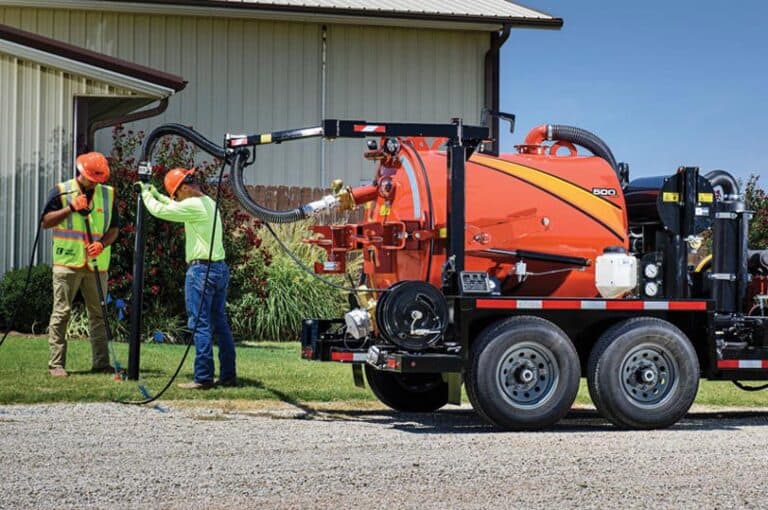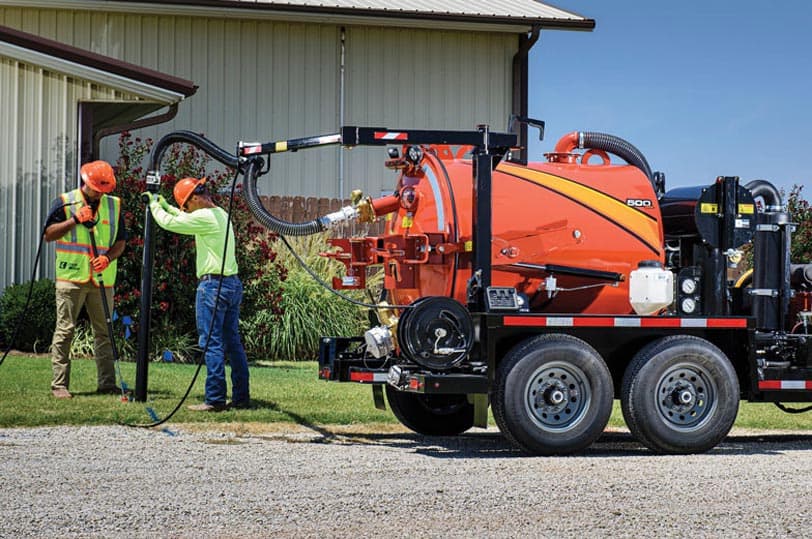Introducing our Safe Work Method Statement Template for Suction Excavator, designed to be a helpful tool to make your worksite safer and more efficient. This comprehensive and pre-filled template comes with a host of features that will help you manage risk, track progress and ensure compliance with regulatory requirements. Here are some of the key features:
- Pre-filled and Comprehensive: Our SWMS template is pre-filled with all the essential details needed for your suction excavator project. This saves you valuable time and effort, allowing you to focus on the job at hand. The template is also comprehensive, covering all the key areas needed to ensure a safe and compliant worksite.
- Fully Editable and Customisable: Our SWMS template is fully editable and customisable in Microsoft Word format, making it easy to adapt to your specific needs. You can add, remove or modify any section of the template to suit your particular project requirements.
- Includes Project Scope and Details: The template includes a clear scope of the project and project details to ensure everyone is on the same page from the outset.
- Checklist of High-Risk Machinery: The template includes a checklist of any high-risk machinery that may be on site, helping you identify potential hazards and take appropriate measures to manage them.
- Staff Training Record: There is a space to record any staff training to ensure that everyone is properly trained and qualified for their respective roles.
- Before and After Risk Ratings: The SWMS template includes before and after risk ratings to help you monitor the effectiveness of your risk management measures.
- Legislative References: The template includes resources for use of legislative references, so you can be sure you are complying with all relevant regulations and standards.
- All PPE Required: The SWMS template includes all Personal Protective Equipment (PPE) required for the project to ensure workers are properly protected.
- Risk Assessment and Matrix: The template includes a comprehensive risk assessment and risk assessment matrix to help you identify and manage potential hazards.
- Checklist for Implementation: A checklist is included to ensure all requirements have been covered when implementing the SWMS.
- Sign Off Page: The template includes a sign-off page for all workers and responsible persons, making it easy to track who has read and understood the SWMS.
- Easy to Use and Customise: Our SWMS template is easy to use and customise, so you can get up and running quickly and easily. You don’t need any special skills or knowledge to use it effectively.
- Suitable for Large Contracts and Tenders: Our SWMS template is suitable for large contracts and tenders, including tier 1 contractual work.
- Instant Download: The template is available for instant download, so you can start using it straight away.
We understand that safety is paramount, and we have designed our SWMS template to be a helpful tool to help you achieve your safety objectives efficiently and effectively. With our template, you can be sure you are taking all necessary measures to protect your workers and comply with regulatory requirements.
Here is some safety information regarding the Suction Excavator.
Safe Work Method Statement (SWMS) for Suction Excavator
- Overview A suction excavator is a machine used to excavate soil and other materials using high-pressure water and a vacuum system. It is essential to follow strict safety protocols while using a suction excavator to prevent accidents and injuries.
- Hazards The hazards associated with the use of a suction excavator include:
- Contact with moving parts of the machine
- Being struck by flying debris or materials
- Slips, trips and falls
- Exposure to high-pressure water
- Electrocution
- Collisions with other vehicles or objects
- Overturning of the machine
- Personal Protective Equipment (PPE) The following PPE should be worn by all workers operating a suction excavator:
- Hard hats
- Safety goggles or glasses
- Hearing protection
- Gloves
- Safety boots with steel toe caps
- High visibility vests or jackets
- Preparation before commencing work Before commencing work with a suction excavator, the following preparation steps should be taken:
- Inspect the machine to ensure it is in good working condition.
- Make sure the area is clear of any obstacles or hazards that could pose a risk to the machine or workers.
- Identify any underground utilities and mark their locations to avoid damaging them.
- Check the weather conditions to ensure that it is safe to operate the machine.
- Operating procedures When operating a suction excavator, the following procedures should be followed:
- Position the machine on a stable and level surface.
- Keep the suction hose away from any moving parts of the machine.
- Only use the machine within the limits of its specifications and capacity.
- Use the machine’s brakes to prevent it from moving when required.
- Ensure that the vacuum system is operating correctly before commencing work.
- Never direct the high-pressure water jet towards other workers or bystanders.
- Always follow safe excavation practices, including digging away from the operator.
- Regularly inspect the machine to ensure that it is working correctly.
- Never leave the machine unattended while it is running.
- Emergency procedures In the event of an emergency, the following procedures should be followed:
- Stop the machine immediately.
- Contact emergency services if required.
- Evacuate the area if necessary.
- Follow the company’s emergency response plan.
- Training requirements All workers operating a suction excavator should be trained in the following areas:
- Safe operating procedures
- Emergency procedures
- Use of PPE
- Identification of hazards and risk management
- Maintenance and inspection of the machine
- Safe excavation practices
- Conclusion By following safe work practices and wearing the appropriate PPE, workers can operate a suction excavator safely and reduce the risk of accidents and injuries. It is essential to follow all company procedures and guidelines to ensure the safety of workers and the public.
Gary’s Safety Tips 
G’day mate! Today, I wanna have a yarn with ya about the importance of creating clear lines of communication for reporting and recording incidents.
Let’s face it, incidents happen in every workplace. Whether it’s a safety issue, harassment complaint, or something else entirely, it’s essential to have a process in place to report and record incidents accurately. Not only does it protect your business from liability, but it also ensures that your employees feel safe and heard.
So, how do ya create clear lines of communication for reporting and recording incidents? Here are a few tips to get ya started:
- Develop a Reporting System: The first step is to develop a system for employees to report incidents. This system should be easy to use, and employees should know how to access it. It’s also important to ensure that employees feel comfortable reporting incidents without fear of retaliation. Consider implementing an anonymous reporting system if possible.
- Train Your Employees: Once ya have a reporting system in place, it’s essential to train your employees on how to use it. Make sure everyone knows what constitutes an incident and how to report it. Provide clear instructions on what information to include in the report, such as date, time, location, and a detailed description of the incident.
- Document Everything: When an incident is reported, it’s crucial to document everything accurately. This includes creating a written report and taking photos or videos if necessary. Documenting incidents helps protect your business from liability and ensures that ya have an accurate record of what happened.
- Investigate Incidents: After an incident is reported, it’s important to investigate it thoroughly. This includes interviewing witnesses, reviewing documents, and gathering any other evidence that may be relevant. If necessary, involve a third-party investigator to ensure an objective investigation.
- Take Action: After an investigation is complete, it’s time to take action. Depending on the severity of the incident, this may include disciplinary action, retraining, or other corrective measures. Make sure to communicate the outcome of the investigation and any actions taken to the employee who reported the incident.
By following these tips, ya can create clear lines of communication for reporting and recording incidents in your workplace. Remember, incidents happen, but how ya handle them can make all the difference. It’s important to have a process in place to ensure that incidents are reported, investigated, and addressed appropriately.
In conclusion, I hope these tips help ya create a culture of transparency and accountability in your workplace. When employees feel safe and heard, they’re more likely to be productive and engaged. And when incidents are handled appropriately, your business is better protected from liability. So, let’s create those clear lines of communication and keep our workplaces safe and productive!
Cheers,

![]()







